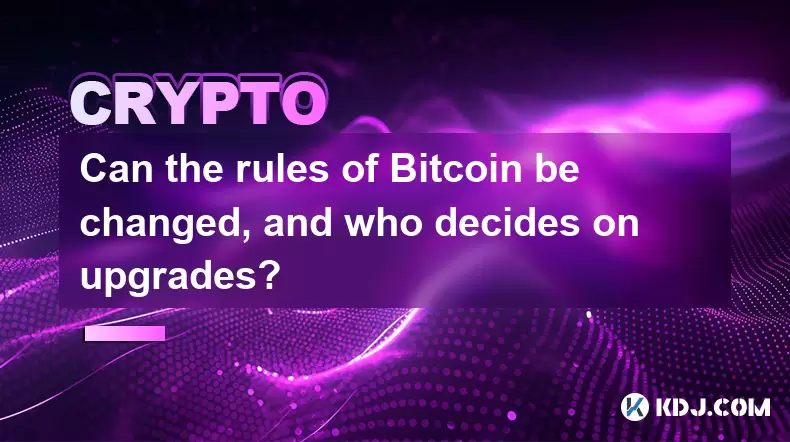-
 Bitcoin
Bitcoin $113900
-1.39% -
 Ethereum
Ethereum $3517
-4.15% -
 XRP
XRP $3.009
1.59% -
 Tether USDt
Tether USDt $0.9997
-0.04% -
 BNB
BNB $766.8
-1.41% -
 Solana
Solana $164.6
-2.38% -
 USDC
USDC $0.9998
-0.02% -
 TRON
TRON $0.3277
0.65% -
 Dogecoin
Dogecoin $0.2023
-1.67% -
 Cardano
Cardano $0.7246
0.05% -
 Hyperliquid
Hyperliquid $38.27
-4.77% -
 Sui
Sui $3.528
-0.52% -
 Stellar
Stellar $0.3890
-0.73% -
 Chainlink
Chainlink $16.16
-2.69% -
 Bitcoin Cash
Bitcoin Cash $539.9
-4.38% -
 Hedera
Hedera $0.2425
-2.00% -
 Avalanche
Avalanche $21.71
-0.97% -
 Toncoin
Toncoin $3.662
5.73% -
 Ethena USDe
Ethena USDe $1.000
-0.02% -
 UNUS SED LEO
UNUS SED LEO $8.964
0.35% -
 Litecoin
Litecoin $107.7
2.33% -
 Shiba Inu
Shiba Inu $0.00001223
-0.40% -
 Polkadot
Polkadot $3.617
-0.97% -
 Uniswap
Uniswap $9.052
-2.49% -
 Monero
Monero $295.1
-3.79% -
 Dai
Dai $0.9999
0.00% -
 Bitget Token
Bitget Token $4.315
-1.85% -
 Pepe
Pepe $0.00001060
0.11% -
 Cronos
Cronos $0.1342
-2.72% -
 Aave
Aave $256.0
-0.87%
Who controls the Bitcoin network if there is no central company or bank?
Bitcoin’s decentralized control relies on nodes, miners, developers, and users, all enforcing consensus without a central authority.
Aug 02, 2025 at 06:01 pm

Understanding Decentralized Control in Bitcoin
The Bitcoin network operates without a central authority, which raises the question of who controls it. Unlike traditional financial systems managed by banks or governments, Bitcoin relies on a decentralized framework where no single entity holds power. Instead, control is distributed across a global network of participants. This includes nodes, miners, developers, and users, each playing a distinct role in maintaining and influencing the network. The system is designed so that changes require broad consensus, ensuring that no individual or group can unilaterally alter the rules.
The Role of Nodes in Network Governance
Nodes are computers that run Bitcoin software and enforce the rules of the protocol. Every full node downloads and verifies the entire blockchain, checking that all transactions and blocks comply with the consensus rules. These rules include conditions like preventing double-spending and ensuring correct block rewards. When a node receives a new block, it independently validates it. If the block breaks any rule, the node rejects it. This means that nodes collectively enforce the rules of Bitcoin. Because anyone can run a node, the power to validate the network is open to all. The more nodes there are, the more resilient the network becomes against manipulation.
- Download and install Bitcoin Core from the official website
- Allow the software to sync with the blockchain, which may take several days
- Keep the node online to continuously validate new blocks and transactions
- Ensure your internet connection and hardware meet minimum requirements
Running a node gives you full autonomy in verifying transactions without trusting third parties. This level of personal verification is a cornerstone of Bitcoin’s trustless system.
How Miners Secure the Network
Miners contribute computational power to solve complex cryptographic puzzles, a process known as proof-of-work. Their primary function is to bundle transactions into blocks and add them to the blockchain. In return, they receive newly minted bitcoins and transaction fees. While miners do not control the rules, they play a critical role in confirming transactions and maintaining network security. If a miner attempts to include an invalid transaction, nodes will reject the block, making the effort and resources wasted.
- Choose mining hardware such as ASICs optimized for SHA-256 hashing
- Join a mining pool to combine hashing power with others
- Install mining software like CGMiner or BFGMiner
- Configure the software with your wallet address and pool server details
- Monitor power consumption and heat output to maintain efficiency
The competitive nature of mining ensures that honest behavior is economically incentivized. Attempting to cheat the system costs more than playing by the rules.
Developers and Protocol Evolution
Bitcoin developers write and propose updates to the Bitcoin software, but they do not have unilateral authority to change the protocol. Their role is to suggest improvements, fix bugs, and enhance security. Proposals, known as Bitcoin Improvement Proposals (BIPs), are reviewed by the community. For a change to be implemented, it must gain acceptance from nodes and miners. A well-known example is the debate around increasing the block size, which led to the creation of Bitcoin Cash due to lack of consensus. This demonstrates that developers guide but do not dictate the direction of Bitcoin.
- Review existing BIPs on the official GitHub repository
- Submit a new BIP with technical specifications and rationale
- Engage with the community through forums like Bitcoin Talk or mailing lists
- Address feedback and revise the proposal accordingly
- Wait for widespread adoption by nodes and miners before activation
Even widely supported changes, like Segregated Witness (SegWit), require activation through user-driven signaling, reinforcing the decentralized nature of upgrades.
User Adoption as Ultimate Authority
Ultimately, users hold the final say in what version of Bitcoin they choose to support. If a proposed change is unpopular, users can refuse to adopt it by continuing to run software that follows the original rules. Market forces also play a role—exchanges, merchants, and wallets decide which chain to recognize based on user demand. If a minority group tries to impose a change, the majority can reject it by not transacting on the altered chain. This economic layer of consensus ensures that only changes with broad support survive.
- Evaluate the implications of proposed changes on security and decentralization
- Choose wallet software and services that align with your values
- Participate in community discussions to express your stance
- Run your own node to independently verify which chain is valid
When users coordinate around a common set of rules, they reinforce the network’s integrity. The value of Bitcoin stems from this collective agreement, not from any central mandate.
Consensus Mechanisms and Rule Enforcement
Bitcoin’s consensus mechanism ensures that all participants agree on the state of the blockchain. This is achieved through a combination of cryptographic proofs and economic incentives. Every node follows the longest valid chain rule, meaning the chain with the most accumulated proof-of-work is accepted as truth. If two blocks are mined simultaneously, the network temporarily splits, but eventually converges on one chain as more work is added. Nodes automatically switch to the heavier chain, making the system self-correcting. This process prevents permanent forks unless there is a fundamental disagreement in rules.
- Ensure your node is connected to multiple peers for accurate chain data
- Monitor chain splits and wait for resolution through additional blocks
- Avoid transacting during short-term forks to prevent loss
- Update software only after confirming community-wide acceptance
The decentralized consensus model means that agreement emerges organically from the network’s participants, not from a central decision-maker.
Frequently Asked Questions
Can a government shut down the Bitcoin network?
Shutting down Bitcoin globally is extremely difficult due to its decentralized structure. Governments can restrict access within their borders, but as long as nodes and miners operate elsewhere, the network continues. The more geographically distributed the nodes, the harder it is to censor or disable the system.
What happens if a hacker gains control of 51% of the mining power?
A 51% attack allows an entity to double-spend coins and block transactions, but they cannot create new bitcoins or alter past blocks without breaking cryptographic hashes. Such an attack is costly and would likely devalue Bitcoin, making it economically irrational. Nodes would also detect anomalies and could choose to fork the chain.
How do updates get approved without a central team?
Updates require widespread agreement. Developers propose changes, but nodes must adopt the new software. If a majority of nodes enforce new rules, the update takes effect. Without consensus, the old rules remain in place, and any divergent chain loses support.
Who decides the 21 million bitcoin supply limit?
The 21 million cap is hardcoded into Bitcoin’s protocol. Changing it would require nearly universal consensus, as any attempt to increase supply would be rejected by nodes following the original rules. This scarcity is a foundational aspect of Bitcoin’s design.
Disclaimer:info@kdj.com
The information provided is not trading advice. kdj.com does not assume any responsibility for any investments made based on the information provided in this article. Cryptocurrencies are highly volatile and it is highly recommended that you invest with caution after thorough research!
If you believe that the content used on this website infringes your copyright, please contact us immediately (info@kdj.com) and we will delete it promptly.
- Worldcoin, Identity, WLD Price: Decoding the NYC Crypto Buzz
- 2025-08-02 21:10:12
- Shiba Inu: Utility and Community Strength Drive Crypto's Evolution
- 2025-08-02 21:50:12
- Crypto Donations, Trump PAC, and Bitcoin: A New York Minute on Political Coin
- 2025-08-02 20:30:12
- Crypto Market Under Pressure: Bearish Momentum and Rising Volatility Take Hold
- 2025-08-02 20:30:12
- Crypto Market Carnage: Liquidations Soar as Ethereum and Bitcoin Take a Beating
- 2025-08-02 21:55:12
- DeFi Token Summer Gains: Is Mutuum Finance the Real Deal?
- 2025-08-02 18:30:12
Related knowledge

What is the difference between holding Bitcoin on an exchange versus in a personal wallet?
Aug 02,2025 at 03:15pm
Understanding Custodial vs Non-Custodial ControlWhen holding Bitcoin on an exchange, users are essentially entrusting their assets to a third party. E...

Can governments shut down or ban Bitcoin?
Aug 02,2025 at 09:44am
Understanding Bitcoin’s Decentralized StructureBitcoin operates on a decentralized peer-to-peer network, meaning it is not controlled by any single en...

Can the rules of Bitcoin be changed, and who decides on upgrades?
Aug 02,2025 at 06:36am
Understanding Bitcoin's Governance ModelBitcoin operates without a central authority, which means no single entity has the power to unilaterally chang...

Who controls the Bitcoin network if there is no central company or bank?
Aug 02,2025 at 06:01pm
Understanding Decentralized Control in BitcoinThe Bitcoin network operates without a central authority, which raises the question of who controls it. ...

What is Bitcoin, and how does it function as a digital currency?
Aug 02,2025 at 04:01am
Understanding Bitcoin as a Digital CurrencyBitcoin is a decentralized digital currency that operates without the need for a central authority such as ...

What is the significance of the 21-week EMA in a Bitcoin bull market?
Jul 10,2025 at 06:56pm
Understanding the 21-Week EMA in Cryptocurrency AnalysisThe 21-week Exponential Moving Average (EMA) is a technical indicator widely used by traders a...

What is the difference between holding Bitcoin on an exchange versus in a personal wallet?
Aug 02,2025 at 03:15pm
Understanding Custodial vs Non-Custodial ControlWhen holding Bitcoin on an exchange, users are essentially entrusting their assets to a third party. E...

Can governments shut down or ban Bitcoin?
Aug 02,2025 at 09:44am
Understanding Bitcoin’s Decentralized StructureBitcoin operates on a decentralized peer-to-peer network, meaning it is not controlled by any single en...

Can the rules of Bitcoin be changed, and who decides on upgrades?
Aug 02,2025 at 06:36am
Understanding Bitcoin's Governance ModelBitcoin operates without a central authority, which means no single entity has the power to unilaterally chang...

Who controls the Bitcoin network if there is no central company or bank?
Aug 02,2025 at 06:01pm
Understanding Decentralized Control in BitcoinThe Bitcoin network operates without a central authority, which raises the question of who controls it. ...

What is Bitcoin, and how does it function as a digital currency?
Aug 02,2025 at 04:01am
Understanding Bitcoin as a Digital CurrencyBitcoin is a decentralized digital currency that operates without the need for a central authority such as ...

What is the significance of the 21-week EMA in a Bitcoin bull market?
Jul 10,2025 at 06:56pm
Understanding the 21-Week EMA in Cryptocurrency AnalysisThe 21-week Exponential Moving Average (EMA) is a technical indicator widely used by traders a...
See all articles

























































































